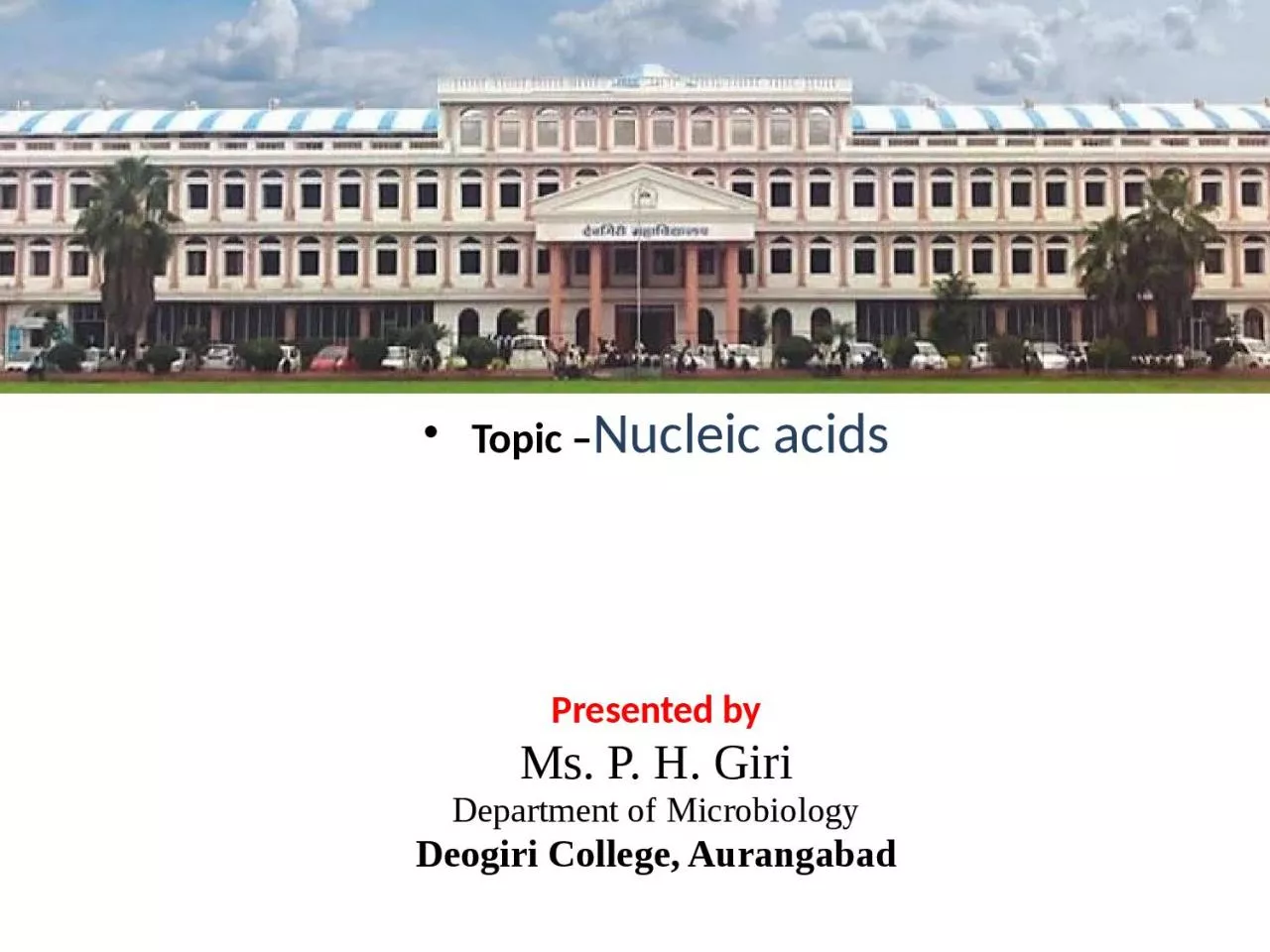

Presented by Ms P H Giri Department of Microbiology Deogiri College Aurangabad BSc F Y Semester II Paper No V Basic Biochemistry Unit 4 Nucleic acids Ms Priyanka H ID: 1039627
Download Presentation The PPT/PDF document "Topic – Nucleic acids" is the property of its rightful owner. Permission is granted to download and print the materials on this web site for personal, non-commercial use only, and to display it on your personal computer provided you do not modify the materials and that you retain all copyright notices contained in the materials. By downloading content from our website, you accept the terms of this agreement.
1. Topic –Nucleic acidsPresented byMs. P. H. GiriDepartment of MicrobiologyDeogiri College, Aurangabad
2. B.Sc. F. Y.Semester IIPaper No. VBasic BiochemistryUnit 4 Nucleic acidsMs. Priyanka H. Giri
3. STRUCTURE OF DNA The widely accepted molecular model of DNA is the double helix structure proposed by Watson and Crick (1953). The DNA molecule consists of two helically twisted strands connected, together by 'steps' as shown in figure
4.
5. Each strand consists of alternating molecules of deoxyribose (a pentose sugar) and phosphate groups. Each step is made up of a double ring purine base and a single ring - pyrimidine base. The purine and pyrimidine bases are connected to deoxyribose sugar molecules. The two strands are intertwined in a clockwise direction, i.e. in a right hand helix, and run in opposite directions.
6. 5) The strand completes a turn each 34A. Each nucleotide occupies 3.4A. Thus, there are 10 nucleotides per turn. 6) Each successive nucleotide turns 36 degrees in the horizontal plane. 7) The width of the DNA molecule is 20A. 8) The twisting of the strands results in the formation of deep and shallow spiral grooves.
7. The DNA molecule is a polymer consisting of several thousand pairs of nucleotide monomers. Each nucleotide consists of the pentose sugar deoxyribose, & phosphate group and a nitrogenous base which may be either a purine or a pyrimidine. Deoxyribose and a nitrogenous base together form a nucleoside. A nucleoside and a phosphate together form a nucleotide.
8. DNA StructureDNA consists of two molecules that are arranged into a ladder-like structure called a Double Helix.A molecule of DNA is made up of millions of tiny subunits called Nucleotides.Each nucleotide consists of:Phosphate groupPentose sugarNitrogenous base
9. Ribose sugar:
10. Nitrogenous basesThere are 2 types:Purines:Two ring structureAdenine (A) and Guanine (G)Pyrimidines:Single ring structureCytosine (C) and Thymine (T) or Uracil (U).
11. Nitrogenous bases:
12.
13. Types of nitrogenous bases:
14. Phosphate group:
15. Nucleosides: (Ribose sugar + N.B)
16. Nucleotide: (Ribose sugar + N.B. + Phosphate Group)
17. Base pairing Each 'step' of the DNA ladder is made up of a purine and a pyrimidine pair, i.e. of a double ring and a single ring compound.
18. Fig. Segment of DNA molecule showing pairing between two nucleotides.